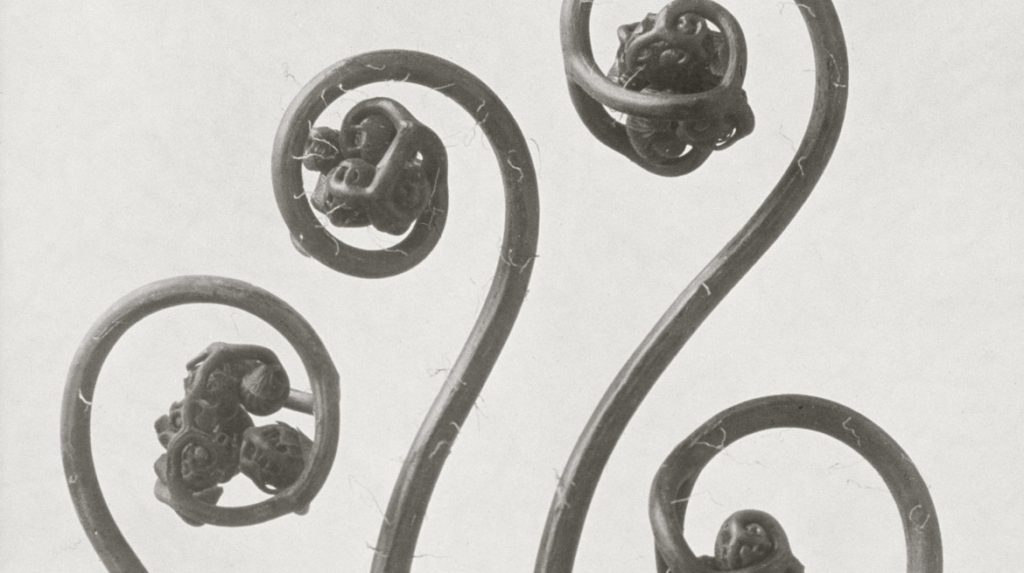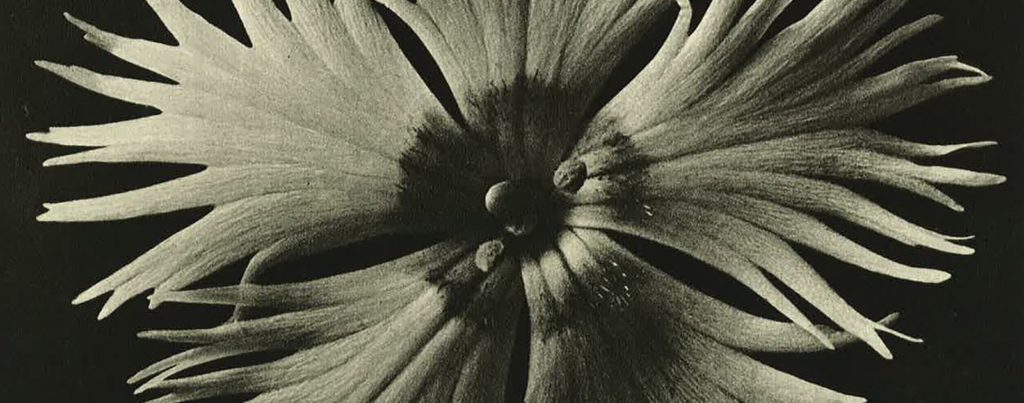Strikingly modern and inherently beautiful, Karl Blossfeldt’s photographs of plants, flowers and seed heads are as appealing today, as they were when they were first introduced to the public in his two landmark books Urformen der Kunst, (Archetypal Forms of Art), 1929 and Wundergarten der Natur, (The Wondergarden of Nature), 1932. From 1898-1932, Blossfeldt taught sculpture based on natural plant forms at the Royal School of the Museum of Decorative Arts in Berlin. In his lifetime Blossfeldt’s work gained praise and support from critics such as Walter Benjamin, artists of the Neue Sachlichkeit (New Realism) and the Paris Surrealists. The use of botanical specimens as photographic subject matter became popular in the early and mid-nineteenth century at the inception of the photographic medium.
What made Blossfeldt’s work unique was his extreme technical mastery of photography. He specialised in macrophotography to enlarge his plant specimens and even designed a camera for this purpose. As a result, everyday garden flowers are presented in such a way that their rhythmic forms are emphasised to the extreme and the plants take on new and exotic characteristics. Blossfeldt wanted his work to act as a teaching aid and inspiration for architects, sculptors and artists. It was his firm belief that only through the close study of the intrinsic beauty present in natural forms, that contemporary art would find its true direction.
Image analysis:

This particular photograph from Blossfeldt’s wide collection of monochrome botanical studies really looks into and highlights the idea of nature being a weird and wonderful thing. At first glance, this photograph doesn’t look like a natural form and instead looks a man made and altered object. The architectural-like structure and strange curves and bends presents the interesting side of simple things like plants that are overlooked as being boring or monotonous. The very zoomed in angle once again emphasizes the detail of the form, with very little negative space in the image so the background doesn’t take away from the main focus.
“IF I GIVE SOMEONE A HORSETAIL HE WILL HAVE NO DIFFICULTY MAKING A PHOTOGRAPHIC ENLARGEMENT OF IT. ANYONE CAN DO THAT. BUT TO OBSERVE IT, TO NOTICE AND DISCOVER OLD FORMS, IS SOMETHING ONLY FEW ARE CAPABLE OF.”


